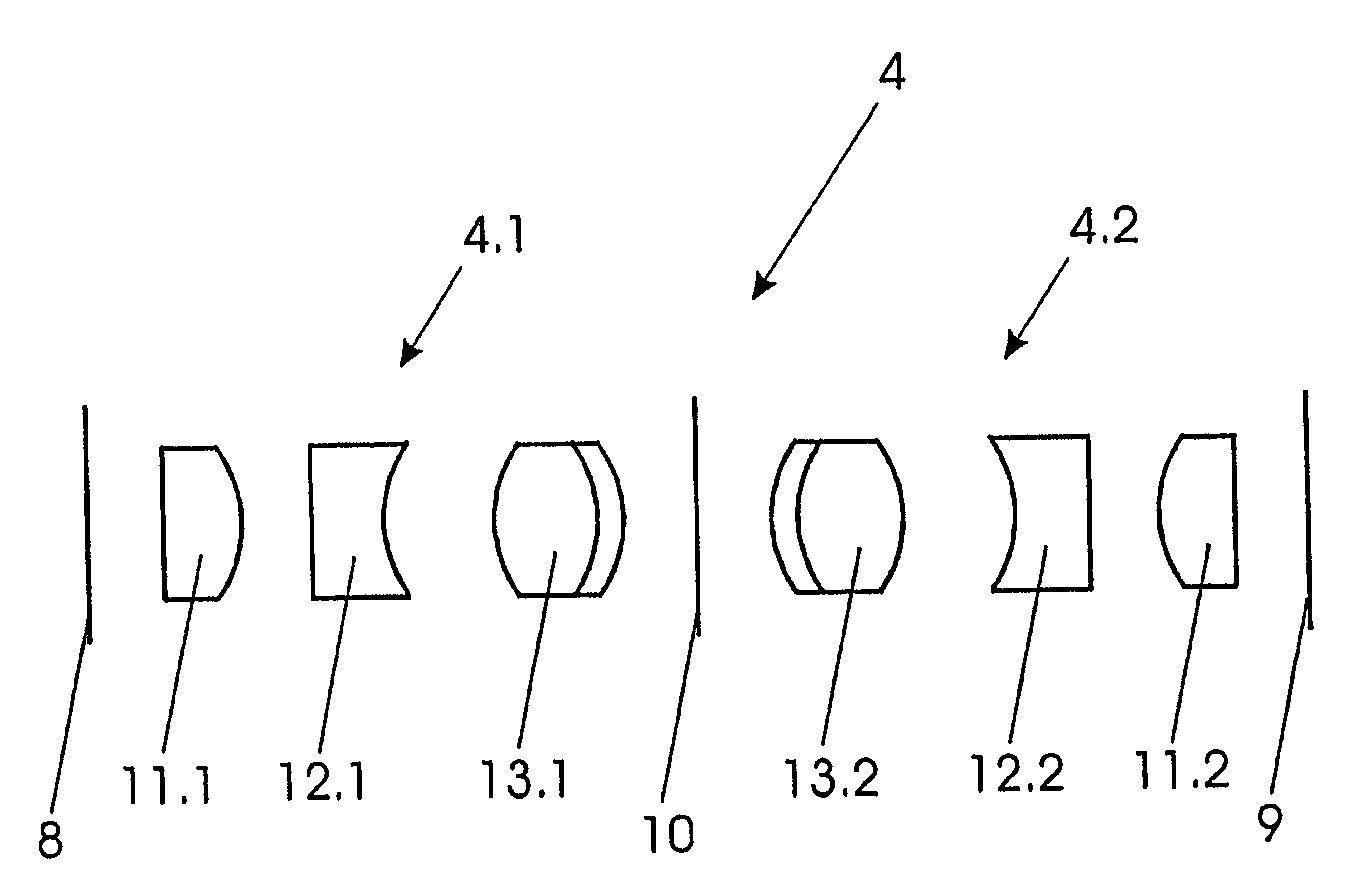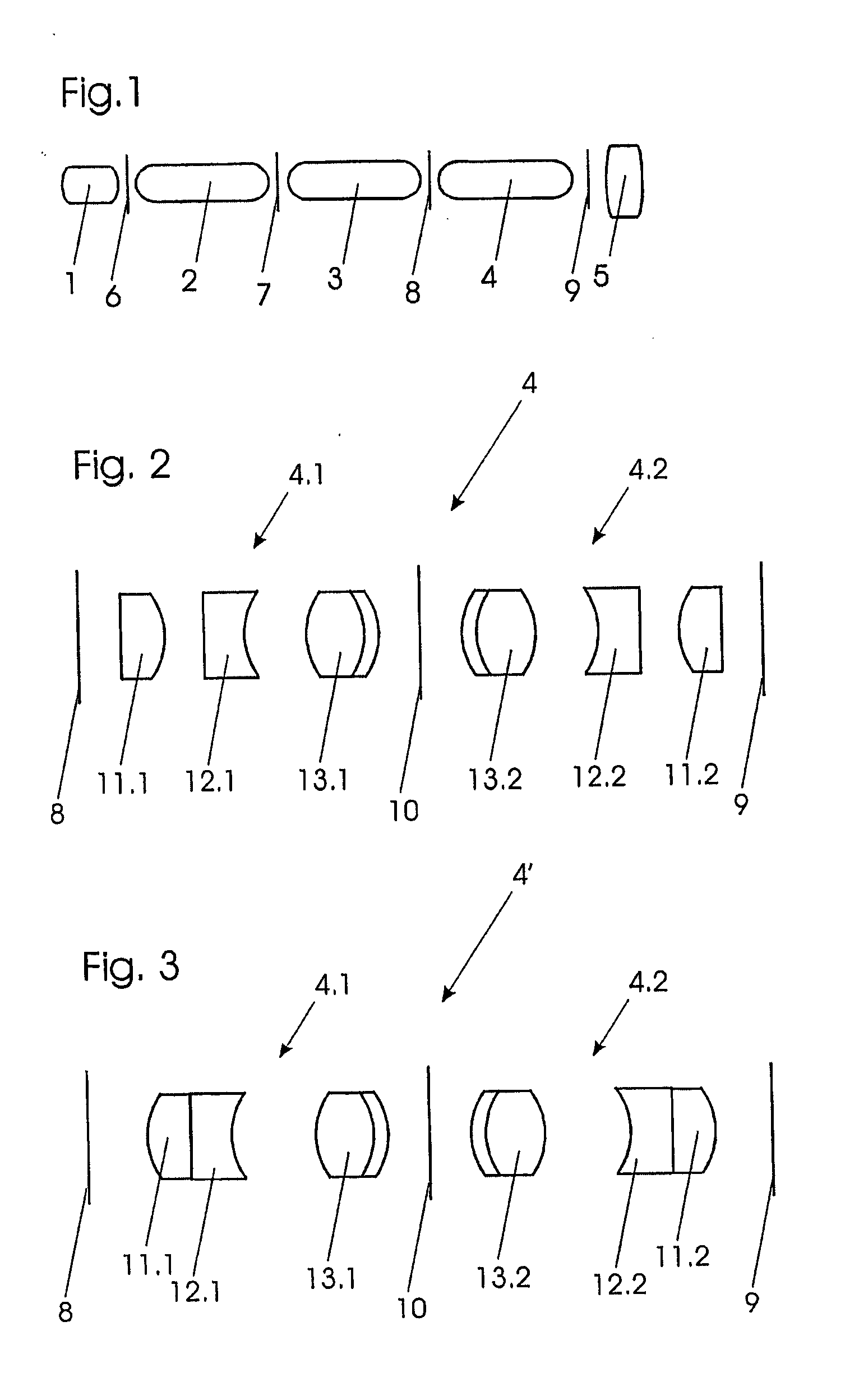Endoscope Relay Lens
a relay lens and endoscope technology, applied in the field of endoscope relay lenses, can solve the problems of not being able unable to correct the curvature of field aberration, and the negative power element is of the well known gauss type, etc., to achieve the effect of simple lenses, low cost and easy calculation
- Summary
- Abstract
- Description
- Claims
- Application Information
AI Technical Summary
Benefits of technology
Problems solved by technology
Method used
Image
Examples
Embodiment Construction
[0015]FIG. 1 shows the typical design of the optical system of a rigid endoscope. Within a rigid tube (not shown) the optical system is placed beginning at the distal end (in FIG. 1 to the left) with an objective 1. In the very schematic representation of FIG. 1 all lens units are shown as single lenses. In the proximal direction from the objective 1 there is following a first relay set 2, a second relay set 3 and a third relay set 4. An ocular 5 is placed at the proximal end.
[0016]The objective 1 is producing an image at an image plane 6 which is transferred by the relay set 2 to an image plane 7 and in the same way from the image plane 7 to an image plane 8 and finally to an image plane 9 on which the image is viewed by the ocular 5, instead of which, also, a camera can be placed. The objective 1 and, also, the relay sets 2, 3 and 4 turn the image upside down so that an odd number of relay sets, in the shown embodiment three relay sets, are used to have an upright image on the fin...
PUM
 Login to View More
Login to View More Abstract
Description
Claims
Application Information
 Login to View More
Login to View More - R&D
- Intellectual Property
- Life Sciences
- Materials
- Tech Scout
- Unparalleled Data Quality
- Higher Quality Content
- 60% Fewer Hallucinations
Browse by: Latest US Patents, China's latest patents, Technical Efficacy Thesaurus, Application Domain, Technology Topic, Popular Technical Reports.
© 2025 PatSnap. All rights reserved.Legal|Privacy policy|Modern Slavery Act Transparency Statement|Sitemap|About US| Contact US: help@patsnap.com


